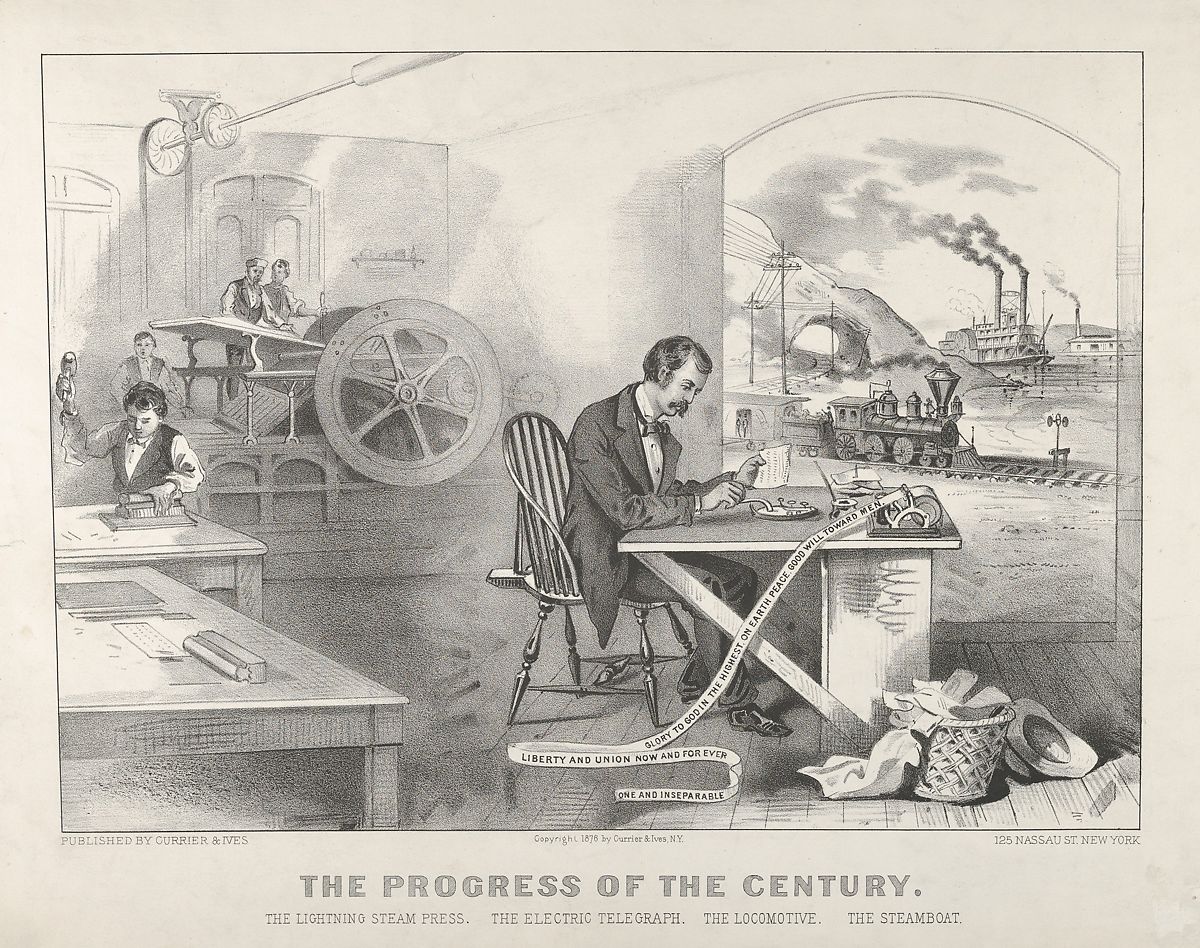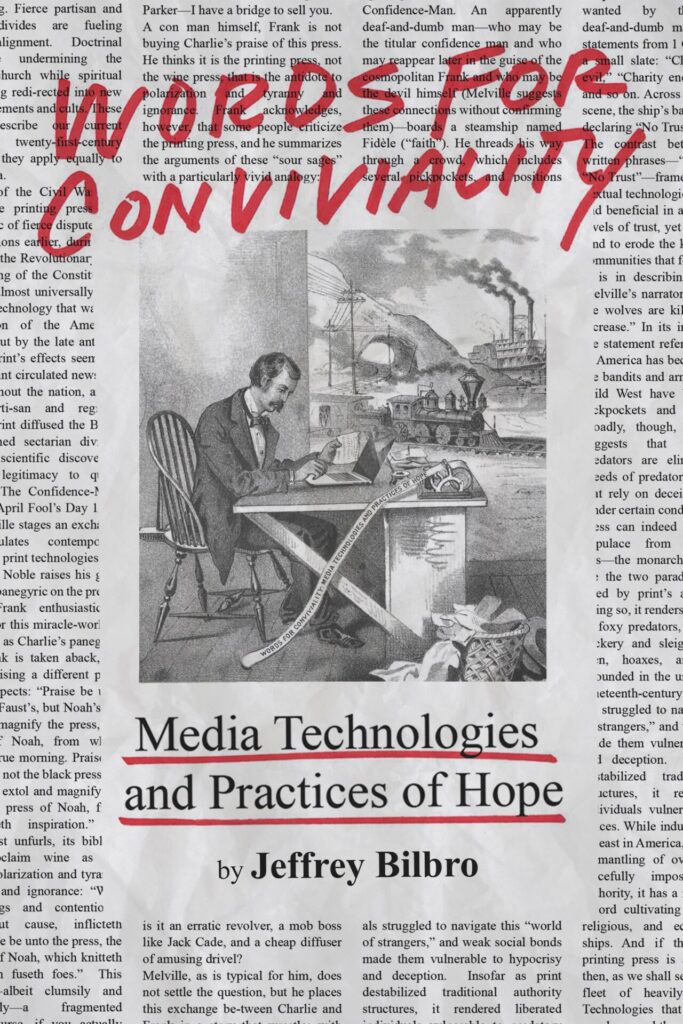Below is an excerpt from Words for Conviviality: Media Technologies and Practices of Hope, published today by Baylor University Press. Right now, Baylor is offering 20% off and free shipping with the code “17FALL24”.
Presenting a set of theses for disputation is an old form, with Martin Luther’s “Disputation on the Power and Efficacy of Indulgences” being the most famous instance. As Luther’s title reminds us, these theses were printed to set the stage for a verbal disputation (though it appears that Luther’s ninety-five theses were never formally debated in Wittenberg). Similarly, the theses that follow are not summative declarations so much as provocations to thought and discussion. (For another example of this genre, see Alan Jacobs’s “Attending to Technology.”) As Francis Bacon notes, aphorisms, because they represent “only portions and as it were fragments of knowledge, invite others to contribute and add something in their turn; whereas methodical delivery, carrying the show of a total, makes men careless, as if they were already at the end.” So if these raise questions or stir fierce disagreement, my hope is that readers will have a keener appetite for the pilgrimage that follows.
These theses are by no means original to me, but rather than including references here, I will more fully acknowledge my sources in the subsequent pages. To make it easier for interested readers to trace these connections, I will refer back to these theses throughout the book (e.g., see thesis 22). Given the primary role the alphabet plays in all subsequent textual technologies, I thought it fitting to include the same number of theses as there are letters in the modern English alphabet. Finally, in keeping with a digital disputatious technology, these aphorisms are all fewer than 280 characters, the limit on tweets after 2017. While arranging theses for a disputation is an old genre, it is also a contemporary one.
- Language is primarily a relational (rather than a representational) technology. Words articulate our relationships to God, other humans, our environment, and even ourselves.
- Because meaning arises from relationships, metaphor and analogy are at the heart of language.
- In the Christian tradition, Christ’s role as mediator and reconciler between God and Creation flows from his identity as the Word. The Word mediates. This mediating Word is the one who declares himself the Truth.
- Beauty and truth and goodness name harmonious forms of relationships.
- Truth is ultimately dramatic or symphonic, not propositional.
- To know the truth is to be in tune with a complex, polyphonic reality. One might say that a “fact” is “true” if it helps us relate to the world in a more proper, harmonious, beautiful, healthy, or just manner.
- Harmony is experienced more fully in artistic or poetic forms rather than in rational exposition. Metaphor, poetry, and narrative invite readers to participate in a harmonic order rather than to map it analytically.
- The highest use of language is to serve friendship, and the kinds of conversations our textual technologies encourage will shape the kinds of friendship that are imaginable.
- Cultures develop the technologies they desire, and the technologies a culture uses shape its desires. One might call this recursive causation.
- Convivial technologies and practices cultivate friendships—they foster harmonious relationships among different members (including other humans, creatures, God, and the self).
- The history of textual technologies in the West—the alphabet, punctuation, spaces between words, moveable type, digital pixels—is a history of atomization.
- These textual technologies have caused words to migrate from an aural habitat to a visual one.
- These textual technologies have also led readers to imagine ideas as objects that are extended in space. Like type and pixels, ideas become bits (or bytes) that can be manipulated and rearranged to form new meanings.
- Print and pixels do have certain differences: Print renders ideas as solid—they feel graspable, reliable, fixed. Pixels render ideas as ephemeral—they appear from a distant cloud or web, and we surf them as they float away.
- Both, however, contribute to a spatial view of language and reality that leads us to imagine reason as a faculty for the perception and manipulation of objects. However, the highest mode of reason is an imaginative participation in reality.
- The atomization of language makes discrete bits of information appear increasingly interchangeable and manipulable.
- Powerful textual technologies can spread ideas widely, but insofar as they render meaning atomized and fungible, they threaten the intelligibility of truth and beauty and goodness.
- Atomization can free individuals from diseased bodies or communities, but the atomizing effects of print and pixel are like the toxins of chemotherapy—better than cancer, but not, in themselves, healthy.
- The recombinations that atomization makes imaginable fragment old syntheses and lead to new forms of meaning.
- The introduction of new textual technologies dissolves old communities and forms new ones (nations, denominations, political parties, factions, fandoms, interest groups).
- As textual technologies mature, they diversify and fragment conversations they sustained in their youth.
- The tension between the liberative power of atomization and meaning’s dependence on relationships defines the paradoxes inherent in the disparate effects of textual technologies.
- There is always an analogy between our dominant way of imagining words and our dominant metaphors for the mind and the self.
- If words are imagined spatially, the human self becomes a bounded container with manipulable contents, and other selves appear to be objects, commodities, or avatars (“Its” rather than “Thous”).
- The Enlightenment subject, the buffered self, is a creature of print. The postmodern subject, the anxious, lonely, identity-morphing self, is a creature of pixels.
- In an atomized world inhabited by commodified subjects, convivial friendship—loving, intimate participation in the life of other creatures, humans, and God—is deeply longed for, yet elusive.





